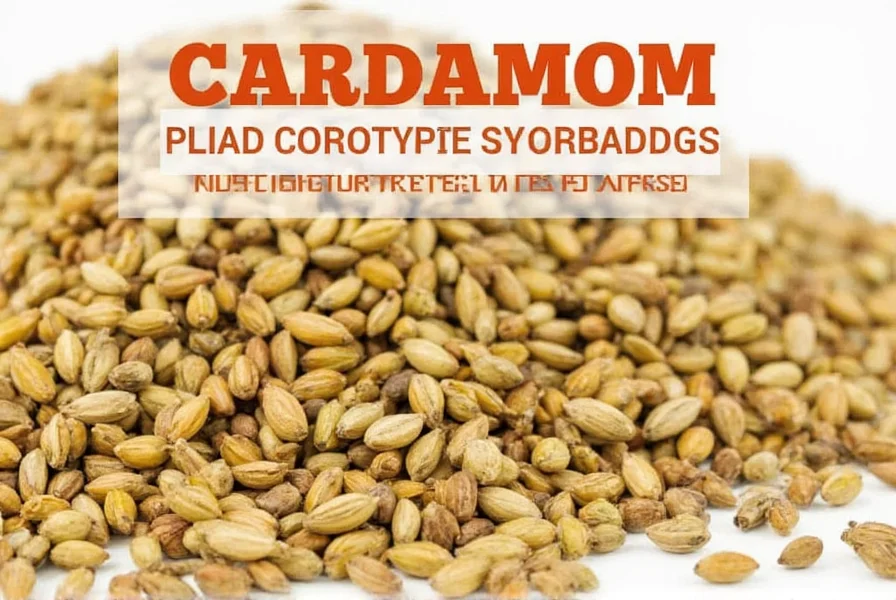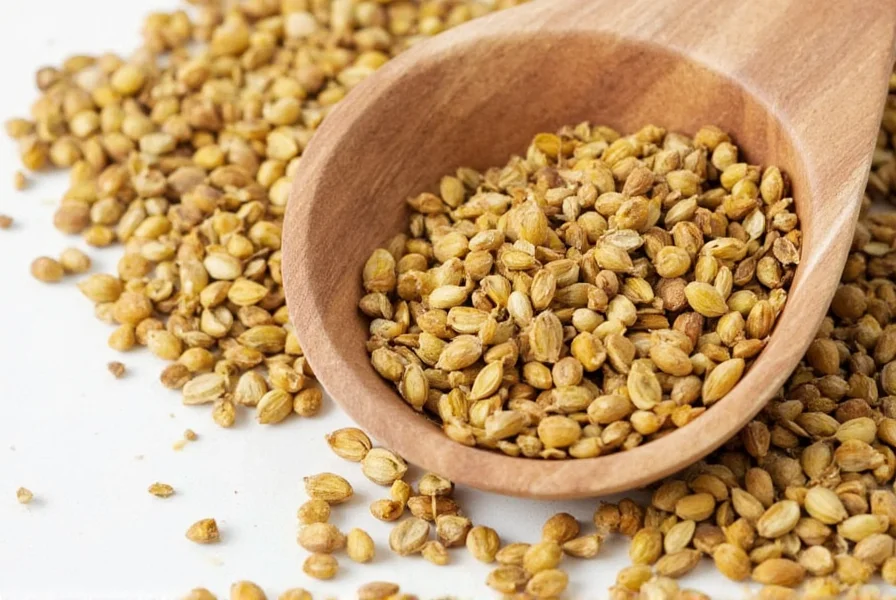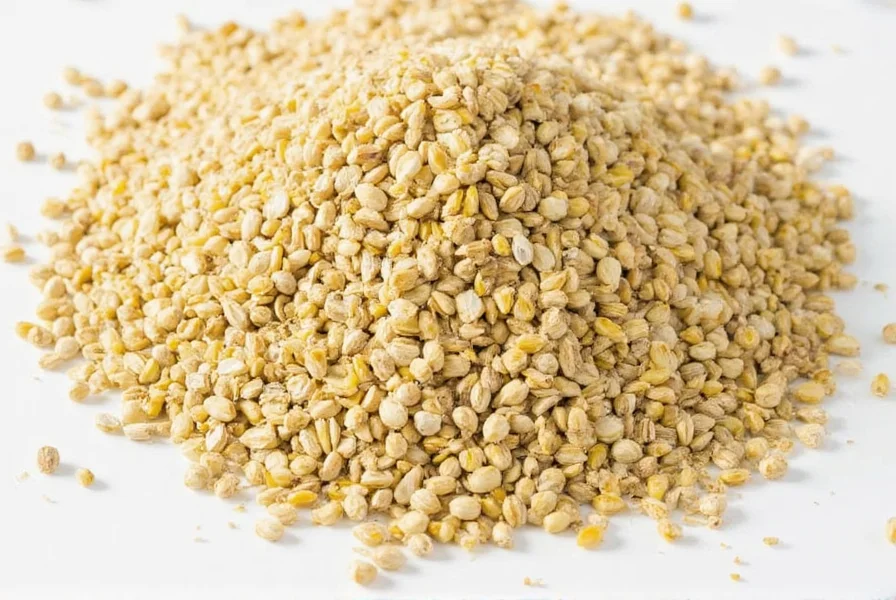The best substitutes for cardamom are cinnamon (use 1/2 tsp for every 1 tsp cardamom), allspice (3/4 tsp for 1 tsp cardamom), or a custom blend of nutmeg, cloves, and cinnamon (1/4 tsp each to replace 1 tsp cardamom). For Scandinavian baking, a cinnamon-nutmeg blend works best, while allspice better mimics cardamom's complexity in Indian dishes. Always adjust to taste as substitutes won't perfectly replicate cardamom's unique citrusy, floral notes.
Cardamom's distinctive flavor—simultaneously citrusy, floral, and slightly minty—makes it challenging to replace. When you're mid-recipe and realize you're out of this precious spice, understanding your best cardamom substitute options can save your dish. Whether you're baking Scandinavian pastries, preparing Indian curries, or spicing coffee, the right alternative maintains your recipe's integrity while working with what's in your pantry.
Understanding Cardamom's Unique Flavor Profile
Before selecting a substitute, recognize what makes cardamom special. Green cardamom pods contain tiny black seeds with complex aromatic compounds that deliver:
- Citrus notes (primarily lemon and orange)
- Floral undertones
- Subtle minty/eucalyptus qualities
- Warm baking spice characteristics
This complexity explains why no single spice perfectly replaces cardamom. The best cardamom substitute depends on your specific recipe and which flavor elements matter most for your dish.
Top Cardamom Substitutes for Different Applications

Cinnamon: Best for Baking and Sweet Applications
When considering cardamom replacement in Scandinavian baking like kardemummabullar, cinnamon provides the closest approximation. Use a 1:2 ratio (½ tsp cinnamon for 1 tsp cardamom) to avoid overpowering sweetness. Ceylon cinnamon works better than Cassia for delicate pastries due to its milder, more complex flavor.
Allspice: Ideal for Savory Dishes and Curries
For Indian or Middle Eastern recipes where cardamom appears in garam masala, allspice (pimento berries) offers the most comprehensive flavor profile. Use ¾ tsp allspice to replace 1 tsp cardamom. Allspice contains notes of clove, nutmeg, and cinnamon—making it the best cardamom substitute for savory applications where cardamom's complexity matters most.
Nutmeg and Cloves Blend: Balanced Alternative
A combination of nutmeg and cloves mimics cardamom's warmth without dominating. For the best cardamom substitute ratio, use:
| Original Cardamom | Nutmeg | Cloves | Best For |
|---|---|---|---|
| 1 tsp ground | ¼ tsp | ⅛ tsp | Sweet breads, coffee |
| 1 tsp ground | ⅛ tsp | ⅛ tsp | Savory stews, curries |
Specialized Substitution Guide by Cuisine
Scandinavian Baking Substitutes
For Swedish or Norwegian cardamom buns, cinnamon alone works well, but adding a pinch of ground coriander (⅛ tsp per tsp cardamom) better approximates cardamom's citrus notes. This cardamom replacement technique maintains the traditional flavor profile while using pantry staples.
Indian Cooking Alternatives
When making biryani or chai without cardamom, allspice provides the most authentic substitute. For garam masala blends, use equal parts allspice, cinnamon, and a tiny pinch of cloves. Remember that black cardamom (used in savory dishes) requires different substitutes than green cardamom—smoked paprika (⅛ tsp) added to allspice better mimics its distinctive smoky quality.
Coffee and Tea Spicing
For cardamom coffee substitutes, use orange zest (¼ tsp per cup) combined with a pinch of cinnamon. The citrus element is crucial here—this cardamom replacement technique preserves the aromatic quality essential to Middle Eastern coffee traditions.

When Substitution Won't Work: Knowing Cardamom's Limits
Some dishes rely so heavily on cardamom's unique profile that substitutes significantly alter the result. Traditional Indian kheer (rice pudding), Omani halwa, and certain Persian rice dishes fall into this category. If you frequently cook these recipes, consider keeping cardamom pods in your spice rotation—they store well for up to two years when kept in an airtight container away from light.
Creating Your Own Cardamom Substitute Blend
For the most versatile cardamom replacement, make this pantry-friendly blend:
- 2 parts cinnamon
- 1 part nutmeg
- ½ part allspice
- ¼ part ground coriander (for citrus notes)
Mix thoroughly and store in an airtight container. Use ¾ tsp of this blend to replace 1 tsp cardamom. This custom cardamom substitute works across most applications and keeps for three months.
Frequently Asked Questions
Can I use pumpkin pie spice as a cardamom substitute?
Yes, pumpkin pie spice makes an acceptable cardamom replacement in baking at a 1:1 ratio. Since it typically contains cinnamon, ginger, nutmeg, and cloves, it captures some of cardamom's complexity. However, it adds ginger notes that may not suit all recipes, particularly Scandinavian baking where ginger isn't traditional.
What's the best cardamom substitute for chai tea?
For authentic-tasting chai without cardamom, use equal parts allspice and cinnamon (⅛ tsp each per cup) with a tiny pinch of cloves. Adding a strip of orange zest during brewing better replicates cardamom's citrus notes. Avoid ginger-heavy substitutes as they create an entirely different flavor profile than traditional Indian chai.
How do I substitute cardamom in a cake recipe?
For cakes and sweet baked goods, use ½ tsp cinnamon plus ⅛ tsp nutmeg to replace 1 tsp cardamom. If your recipe includes citrus elements (like orange zest), reduce the cinnamon to ⅓ tsp since the citrus notes partially compensate for cardamom's missing flavor dimensions. This cardamom replacement ratio maintains the spice balance without overwhelming other flavors.
Can I use cardamom extract if I don't have whole pods?
Yes, cardamom extract makes an excellent substitute when you lack whole pods or ground cardamom. Use ½ teaspoon extract for every 10 cardamom pods called for in your recipe. Since extracts are concentrated, start with less and adjust to taste. This works particularly well in liquid-based recipes like custards, syrups, or beverages where the extract can distribute evenly.











 浙公网安备
33010002000092号
浙公网安备
33010002000092号 浙B2-20120091-4
浙B2-20120091-4